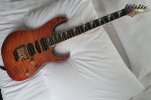Piing
Axe-Master

I finally have a guitar is perfect on all aspects! Plays and feels flawless like a J-Custom, and this piece of wood has resonant mojo. Even the Dimarzio/IBZ pickups have great tone with the Axe-FX III, so I may not consider swapping them unless I am victim of some irrational gas-whim. Pleasantly surprised with the mid pup for clean and crunchy.
I've always been a fan of the Lo-Pro edge, but once removing the ZPS3 stabilizer from the Edge Zero it feels and flutters like the Lo-Pro. And it is so easy to attach/remove that it is very handy when needing a guitar with fixed-bridge behavior (adjacent strings do not go out of tune when bending)
The RG2560ZEX was made by FujiGen in small quantities to sell exclusively in Japan, so it is probably built with special care.
When someone says that certain guitar is amazing, or that it is the best guitar he's ever played, I always wonder what guitars he has owned, to put his view into context. So, I will enumerate some of the Super-Strats that I've purchased in attempts to replace my old and worn-out #1: a RG550LTD. All these were great guitars, but I sold them and kept using the RG550LTD for different particular reasons
Ibanez Prestige S5470Q RBB - Dead note

Ibanez J-Custom RG8550MZ BBE - Dead Note
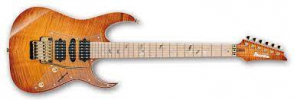
Ibanez JS2450 - The pickups squealed like pigs at the slaughter in the nearby of any speaker. Dimarzio tech recognized that hot glue between the poles was missing inside. I was too pissed-off to fix them myself (they totally ruined my first rehearsal with a band) and didn't bind with this guitar.

Charvel Pro-Mod DK24 HSS - No mojo at the particular piece of wood I got.
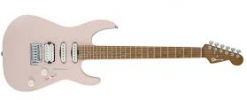
Ibanez JEM777 30th Anniversary - This one was perfect, except for the infantile aesthetics. But I told my wife that I could make profit reselling it, and I had to keep my word
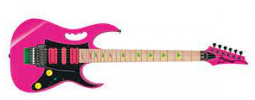
* Edit: the JEM777 30th Anniversary was not perfect. The squared neck joint is a pain in the ass to access the upper frets lower strings. Nothing like the AANJ
* 2nd edit: I forgot to add the Suhr Modern Satin! Sold because it also had a damned dead note. Why is it that the first solo you practice with a cursed new guitar always has a crucial note that has to be sustained with the dead note?
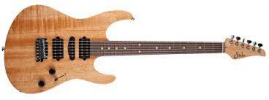
Last edited:



